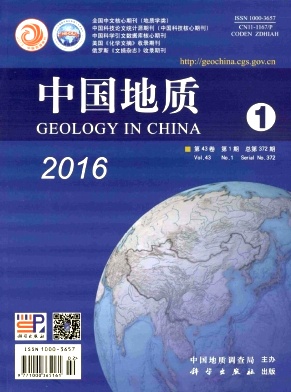LI Jie, SONG Ming-chun, LI Shi-yong, ZHOU Xiao-jian, SONG Ying-xin, DING Zheng-jiang, YANG Li-xin, WANG Shan-shan, JIANG Fan, LI Qian. Geological and geochemical features of the Dadengge gold polymetallic deposit in Jiaodong Peninsula[J]. Geology in China, 2016, (1): 221-237. doi: 10.12029/gc20160116
| Citation: |
LI Jie, SONG Ming-chun, LI Shi-yong, ZHOU Xiao-jian, SONG Ying-xin, DING Zheng-jiang, YANG Li-xin, WANG Shan-shan, JIANG Fan, LI Qian. Geological and geochemical features of the Dadengge gold polymetallic deposit in Jiaodong Peninsula[J]. Geology in China, 2016, (1): 221-237. doi: 10.12029/gc20160116
|
Geological and geochemical features of the Dadengge gold polymetallic deposit in Jiaodong Peninsula
-
1.
College of Resources, Shijiazhuang University of Economics, Shijiazhuang 050031, Hebei, China
-
2.
Shandong Bureau of Geology and Mineral Resources, Jinan 250013, Shandong, China
-
3.
Geophysics and Geochemistry Research Institute in Shandong Province, Jinan 250013, Shandong, China
-
4.
Nuclear and Radiation Safety Center of MEP, Beijing 100082, China
-
5.
Shandong Geological Sciences Institute, Jinan 250013, Shandong, China
-
6.
Shandong 3rd Exploration Institute of Geology and Mineral Resources, Yantai 264200, Shandong, China
-
7.
Shandong 6th Exploration Institute of Geology and Mineral Resources, Weihai 264209, Shandong, China
-
Abstract
In this paper, the authors described the geological features of the the Dadengge gold polymetallic deposit, analyzed major elements, REE, sulfur isotope, δDV-SMOW-δ18OH2O, and fluid inclusions, and then summarized the geochemical features so as to find the ore-forming genesis and physicochemical conditions. Major element analyses show that the alteration zone gained SiO2, K2O but lost Na2O, Al2O3, CaO during alteration. The sulfur isotope composition ranges between 7.0‰ and 7.1‰ δ34SCDT, suggesting that the sulfurs were of the same origin, being a unified source. The δDV-SMOW values range from -83.68‰ to -116.95‰, and theδ18OH2O values range from -2.57‰ to 8.35‰, suggesting that the mineralizing fluids were derived from the mixed magmatic and meteoric water. The mineralizing process took place under the condition of medium temperature (86-429℃) and low salinity (1.74%-22.38% NaCleq), and the mineralizing fluid might have been a CO2-H2O-N2-NaCl system. The mineralizing fluids of the main mineralization stage exhibited feature of multiple sources, and the change of physicochemical conditions and fluid immiscibility were the important mechanisms for deposition and enrichment of gold and other mineralizing elements.
-

-
-
Access History







 DownLoad:
DownLoad: